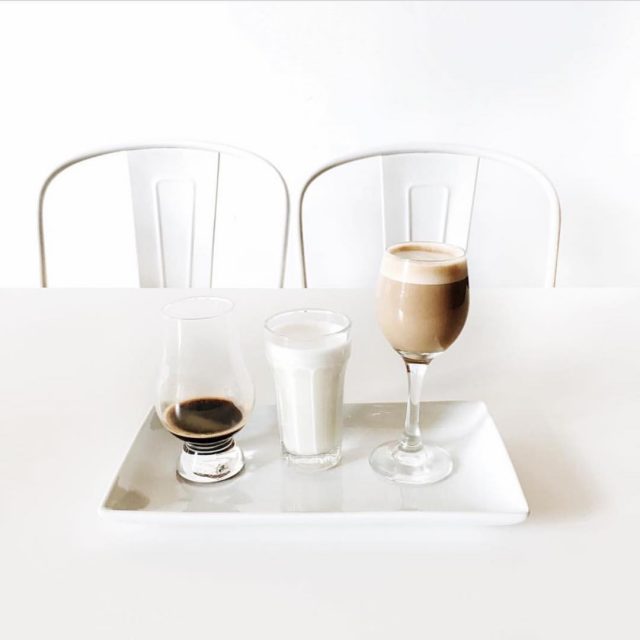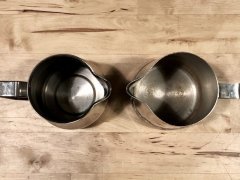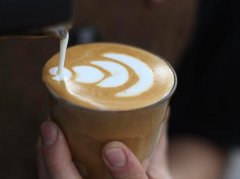How to choose milk and foam suitable for flower pulling? How long does it take to learn the simplest pattern of coffee flowers?

Professional coffee knowledge exchange more coffee bean information please follow the coffee workshop (Wechat official account cafe_style)
Focus on the discussion: is the coffee flower really that important?
The foam at the top of the flawless cappuccino doesn't happen by accident. The color layer in the freshly poured latte is also different. They are there for two things: the skill of baristas and the quality of the milk they use.
Low-quality milk can cause soft foams and foams in Houdini that disappear before the drink is even given to the customer. Just as the birthplace of coffee beans can greatly change the taste of coffee, the source of milk may be the difference between the perfect cup and the forgotten cup.
So I talked to Joao Almeida, the founder of Barista Lab Milk, the finalist of three British barista championships. This is what he must tell me about choosing the best coffee milk.
Coffee lace barista skills and quality milk: both are important. Credit: QuentinCaf é
The Origin of Milk: it is a Science
"Real milk is more important than red, green and blue bottles," Joao explained.
Each farm produces milk with different fat and protein content and different sweetness levels. The exact quality of milk depends on the amount of milk consumed, the feeding conditions and the way the milk is collected and treated.
Joao told me that there is a kind of milk behind science that is best for baristas. Researcher MortenM ü nchow found that Jersey cows produce the best mutated milk. This is because their milk contains high levels of protein, sugar and butter fat.
As a result, Jersey milk has become a treasure for artisanal cheese and ice cream makers-although low-cost companies tend to avoid them because they produce less milk.
It's not just about variety, but free-range and heterogeneous milk is also associated with better quality.
What makes up your milk, coffee and milk? Steamed milk and latte foam
Let's see what happens when we steam milk. This process involves introducing hot steam (250-255 °F, 121-124 °C) into cold milk (40 °F, 4 °C) until the ideal temperature is reached to complete a "perfectly steamed latte". The process sounds simple-but there are some variables to consider.
Most importantly, different kinds of milk require different amounts of steaming time. The right thing to do is important: too much temperature can lead to burns. This kills bacteria and denatured enzymes, causing clotting (this is the aggregation of denatured milk proteins).
It's not just steam time that is affected. Because different types of milk have different molecular composition, they also need different cooking temperatures.
The correct temperature of the coffee flower is the key to getting the perfect latte. Credit: Huckleberry Rooster
Why is some milk different?
Milk has three main ingredients: protein, carbohydrates and fat.
Protein accounts for about 3.3% of milk, and skim and semi-skim milk have a higher proportion of carbohydrates and fats. The content of this protein can be divided into two categories, casein and serum.
The potential chemical composition of specific milk.
Serum or whey protein contains most of the nine essential amino acids. They can be coagulated and / or denatured by heating to give cooked milk a unique flavor.
Casein, on the other hand, forms a substance called micelles. During steam, the injected bubbles destroy these micelles. Molecules contain bubbles that prevent bursting and foam formation.
Takeout: the different protein content of different milk will affect the ability of each kind of milk to maintain foam and decorate your latte. You should know that whole milk leads to thicker, more creamy foam, while skim milk leads to more foam and bigger bubbles.
Milk% protein
Skim milk 3.4
1% milk 3.4
2% milk 3.3
Whole Milk 3.2
Don't overheat the milk.
Lactose is the carbohydrate component of milk-disaccharides made up of D-glucose and D-galactose. There are two forms of lactose in the equilibrium mixture, due to spin, α-lactose and β-lactose. β-lactose is a more stable form and a sweet form of both.
When the temperature of milk exceeds 100 °C, this leads to "browning" (Maillard reaction). At this point, lactose and milk protein-mainly casein-form so-called Amadori products.
As the reaction continues, dehydration and oxidation may occur in Amadori products. It can lead to loss of nutritional value and unattractive flavor compounds in milk. In other words, avoid oversteaming.
Different types of milk require different steaming temperatures.
See also: latte milk foaming: why you shouldn't use hot milk
Temperature affects foam stability
The last major ingredient of milk is cream. This is a small ball in milk. More than 98% of them are different types of fatty acids, including saturated fatty acids, monounsaturated fatty acids and polyunsaturated fatty acids.
Like proteins, these fat molecules stabilize foam formation by surrounding air from steam rods and trapping them in bubbles.
At temperatures below room temperature, higher fat content leads to more stable foam, while milk with lower fat content (such as skim milk) stabilizes foam better at higher temperatures. This may be due to a decrease in the surface tension of fat along the bubble surface, which itself is the result of an increase in the percentage of fat.
Heating these fat molecules not only affects the texture of the foam. When heated or steamed, fatty acids are also involved in chemical reactions, such as oxidation. On the other hand, this may cause a bad smell.
The moral of the story is that each milk ingredient contributes to foam and foam power, and steam has an effect on these ingredients.
Excessive steaming of coffee flowers can lead to an unpleasant taste.
Sustainable milk
All this means that if we want high-quality milk, we need to ask the farm (just like our coffee beans). We should know what kind of cows the milk comes from, what these cows are feeding, and if they are free-range, there are more.
"I began to think about coffee in my conscience," Jose told me. "this is good milk. Baristas get the best quality milk, while farmers get better prices for their hard work. "
He cited Rowley Farm as an example. He bought a place from Barista Lab Milk. Run by the Whitby family, John Stephen and Lilles, it is one of the last dairy farms in southern Buckinghamshire. It has 200 Jersey cattle, which are close to the farm's wheat and Big Michael's crop fields.
Joao told me that such high-quality feed makes "a different world for the final product". This is the raw material that cattle use to produce milk-better feed can make better milk. More importantly, the freedom to roam the farm leads to better welfare, which also leads to better milk.
Rowley Farm is also a member of Charity LEAF (Linking Environment&Farming), which helps farmers achieve sustainable development as much as possible.
Milk quality milk is as important as quality coffee.
The Origin of Coffee-this is a topic of serious verbal expression every day around the world. Customers often pledge allegiance to a single source of beans. Most baristas can write a paper on where a particular coffee comes from and how it affects everything from aroma to sweetness.
But while legumes dominate the major origin debate, the other side has been waiting. It's time to start talking about how different cows and different dairy farms affect the milk in coffee.
Written by Sarah Holt of Barista Lab Milk.
Analysis of the steps of coffee flower drawing how to avoid the pattern deviation? Tips for flower drawing
Important Notice :
前街咖啡 FrontStreet Coffee has moved to new addredd:
FrontStreet Coffee Address: 315,Donghua East Road,GuangZhou
Tel:020 38364473
- Prev

How to make coffee flowers? How to choose the flower jar that is most suitable for making milk foam and flower drawing?
Professional coffee knowledge exchange more coffee bean information please follow the coffee workshop (Wechat official account cafe_style) key discussion: is coffee flower really that important? Milk steaming and flower drawing are two basic skills of any barista. It's not easy to master, especially when you start for the first time, but I have good news for you: choosing the right milk can can be of great help. Market
- Next

Coffee pull Guide-how much does it cost to learn to make coffee from scratch?
Professional coffee knowledge exchange more coffee bean information please follow the coffee workshop (Wechat official account cafe_style) key discussion: is coffee flower really that important? You need cold and fresh milk. Most people like whole milk coffee flowers, but it's really up to you, and if you use the right technology, then it won't make much difference. It's just.
Related
- What is the meaning of lactic acid fermentation with coffee bean treatment?
- How to judge the state of foam by sound?
- How does the latte pull out the unicorn pattern? Come to get for a little trick to improve the flower pull!
- Will flower pulling affect the taste of the latte?
- Do you know the history of coffee?
- The difference between honey treatment and sun washing what is raisin honey treatment?
- What kind of milk can a novice use to make coffee foam to keep the foam longer? The correct method and skills of milking tutorial sharing
- Why do washed coffee beans taste sour? Flavor characteristics of washed Coffee
- Introduction to the skill of how to practice the size and height of water injection around the circle of hand-brewed coffee
- How do beginners practice coffee flower drawing from scratch?

